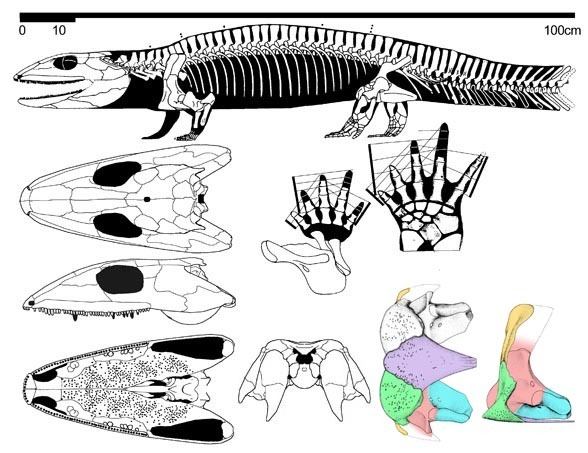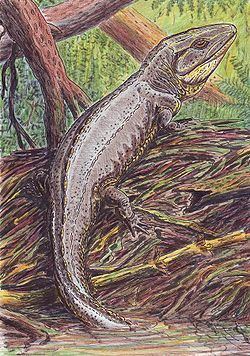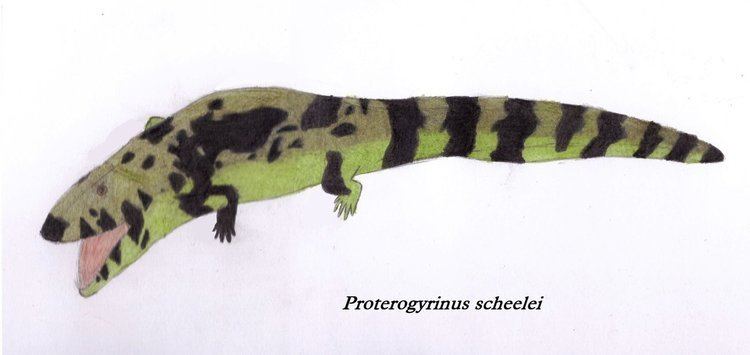Rank Genus | Phylum Chordata | |
 | ||
Similar Anthracosauria, Embolomeri, Petrolacosaurus, Seymouria, Gephyrostegus | ||
Proterogyrinus was an anthracosaur, a large group of reptilian reptiliomorphs. It is likely that the first reptiles, such as Petrolacosaurus, evolved from reptilomorphs. Like other reptiliomorphs, such as Seymouria, Proterogyrinus could venture further away from water than most amphibians.

Its name is Greek for "early wanderer" or "earlier tadpole".
Information

During the Carboniferous period (359~299 million years ago), the amphibians were a diverse group of animals that had come to dominate the waterlogged forest world. They also were evolving into reptiles, which produced the unique and interesting reptiliomorphs.

Proterogyrinus was one of the largest of its region, and was perfectly adapted for life in the swamps. It was a top predator that hunted both on land and in the water. Its powerful jaws had sharp teeth that could handle animals that were quite large, such as fish, large arthropods, and other tetrapods such as reptiles and amphibians.

Proterogyrinus was similar in shape to other prehistoric amphibians, and reptiliomorphs, such as Crassigyrinus and Eryops. It was about two and a half meters (7–8 feet) long, similar in size to some of the biggest modern lizards.
Most Carboniferous amphibians were good swimmers and could move fast through the rivers, lakes, and bogs surrounding the lowland forests, but also could walk on land like some amphibians today. Many species either stayed in the water at all times or could only wriggle through the mud on the banks; reptiliomorphs (including Proterogyrinus) ventured further into the forest. Being able to hunt away from the water's edge meant that Proterogyrinus could catch food in places where its rivals could not go. It also meant that it could escape water-borne enemies, such as predatory fish, by clambering on shore, or over the logs and other obstacles that frequently choked the swamps' river channels.
Fossils have been found in Scotland, UK, and West Virginia, United States and date back to the Serpukhovian from about 331-323 million years ago.
